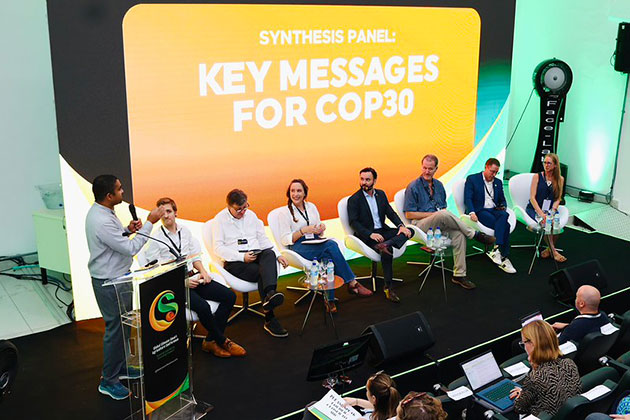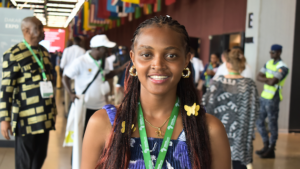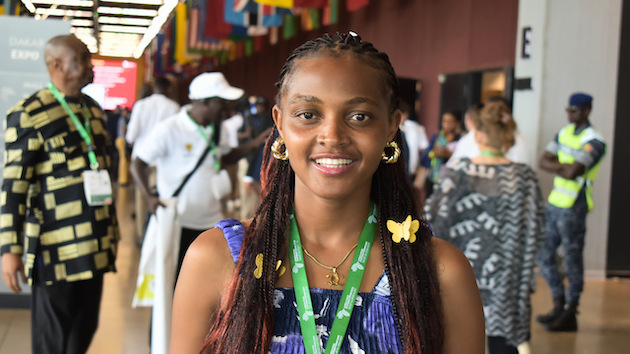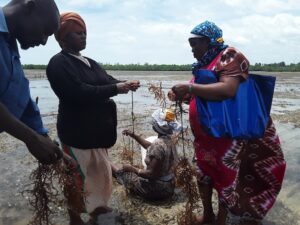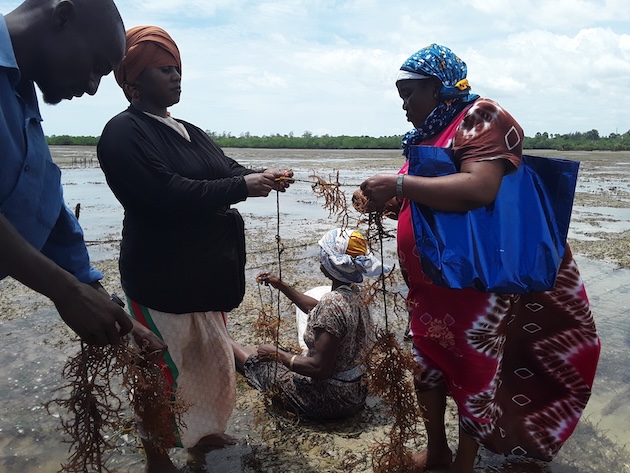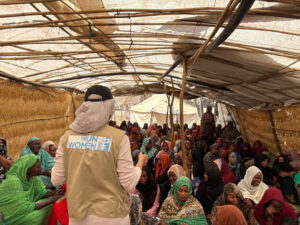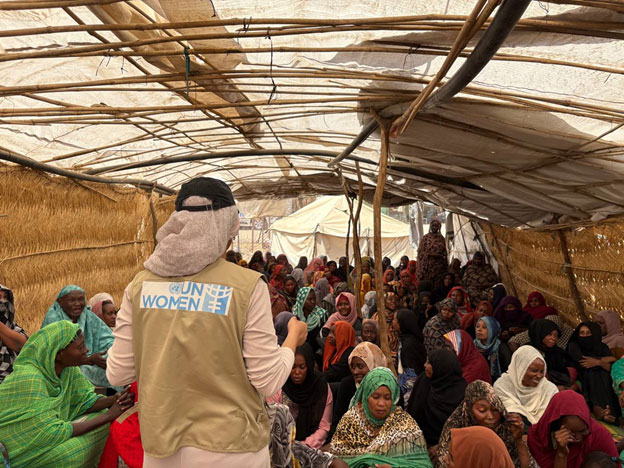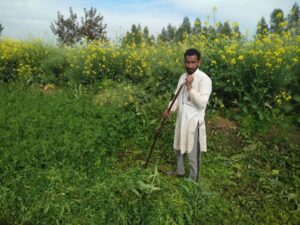
Asia-Pacific, Climate Change, Conferences, Development & Aid, Economy & Trade, Environment, Featured, Food and Agriculture, Food Systems, Global, Headlines, Sustainable Development Goals, TerraViva United Nations
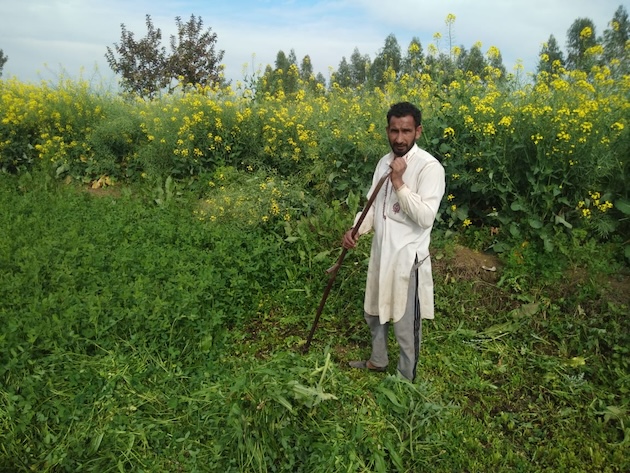
The Global Environment Facility’s food systems program found that its programs are highly relevant to global efforts to curb deforestation, land degradation, biodiversity loss and greenhouse gas emissions from agriculture, fisheries, and commodity supply chains. Pictured here is a farmer in Kashmir’s frontier hamlet of RS Pura bordering Pakistan, farmers in this region have been affected by both climate change and conflict. Credit: Umar Manzoor Shah/IPS
– A new independent evaluation of the Global Environment Facility’s food systems programs says they are delivering strong environmental and livelihood gains in many countries but warns that a narrow focus on farm production, weak political analysis, and shrinking coordination budgets are holding back deeper transformation.
The Evaluation of GEF Food Systems Programs, prepared by the GEF Independent Evaluation Office for the 70th GEF Council in December 2025, reviews five major programs from GEF 6 to GEF 8. Together they cover 84 projects in 32 countries, backed by about USD 822 million in GEF finance and more than USD 6 billion in co-financing.
The report finds that the programs are highly relevant to global efforts to curb deforestation, land degradation, biodiversity loss and greenhouse gas emissions from agriculture, fisheries and commodity supply chains. They also respond to growing pressure on food systems as the world’s population rises and millions still lack access to healthy diets.
“Food systems are major drivers of global forest and biodiversity loss, land degradation, water pollution and greenhouse gas emissions,” the report notes. It says GEF funding has helped countries design more integrated approaches that connect environmental goals with farming, fisheries and rural development.
Results Most Visible at Community Level
During a webinar to launch the report, Fabrizio Mario Dante Felloni, Deputy Director of the Independent Evaluation Office, said the team had used a systemic lens, looking at the whole food system rather than isolated projects. The evaluation drew on document reviews, geospatial analyses, surveys, interviews, and case studies in Ghana, Indonesia, Peru, and Tanzania.
Felloni said the programs mark a clear shift from earlier, more fragmented efforts. They try to connect ministries and sectors that often work in isolation. “Because it was a food system, looking at the different sectors involved” was central to the design, he explained during the presentation.
The evaluation confirms that GEF food systems projects address several environmental pressures at once. Most initiatives target land and soil degradation, deforestation and biodiversity loss, often through better land use planning, sustainable farming practices, and stronger governance of coastal fisheries. Many projects also seek to link environmental gains with better incomes, skills for women and youth, and improved food security.
Results are most visible at the community level. The report highlights gains in biodiversity, improved land management and reduced emissions when farmers have adopted climate-smart or ecosystem-friendly practices. Socioeconomic benefits include higher yields and incomes, new skills for women, and greater youth engagement in agriculture.
At a meso level, some projects are improving value chains through better market access, traceability and basic processing support. At the macro level, the evaluation records progress on policies and governance, including multi-stakeholder platforms, land use and marine planning, and early steps toward aligning national and local policies.
Yet the evaluation also finds clear gaps. While more than 90 percent of projects focus on the production stage, only about 40 percent look seriously at postharvest issues such as storage, processing, transport and markets. Very few tackle food loss, waste or dietary change, even though these are critical for shifting entire food systems.
“Despite having an ambition to look at the food system and value chains, there was still a production-focused type of approach,” Felloni said. Environmental drivers and biophysical issues receive strong attention in design, but only 40 percent of projects examine the political context, and around 30 percent look closely at socioeconomic drivers.
That limited attention to political economy and social dynamics restricts transformational potential, the report argues. It notes that many designs assume that coordination and platforms will naturally lead to policy alignment, without fully analyzing power relations, trade offs or vested interests.
‘Coordination Budgets Are Shrinking’
Jessica Kyle of ICF, who led parts of the evaluation, told the webinar that private sector engagement has been a “key feature” of the food systems programs. Around two-thirds of country projects include some engagement with businesses, from public private partnerships and capacity building to support for national commodity platforms. At the global level, partners such as the International Finance Corporation have mobilized significant private finance for sustainable commodities.
However, she said scaling these efforts remains difficult. Fragmented supply chains, often weak regulatory incentives for sustainability, and unclear business cases are some of the challenges. Programs have also struggled to link global work on standards and finance with activities in country projects.
On the program approach itself, Kyle said the evaluation found real added value. Stronger program governance, shared design frameworks and knowledge pathways have improved the coherence of activities and allowed influence to extend beyond individual project boundaries. The programs have generated many knowledge products, trainings and learning events and have increasingly shifted from broad global exchanges to more targeted regional and commodity-focused dialogues.
Even so, the report finds “relatively limited evidence” that countries are applying this knowledge in a systematic way. Timing is one reason. In some cases, guidance arrived before projects were ready to use it. In others, knowledge products were not tailored to local needs, or project teams were reluctant to adjust activities mid-course.
To address this, the evaluation calls for stronger “country docking” so that global coordination projects can provide support when countries actually need it and in forms they can absorb. It also urges more participatory processes to identify country demands for technical assistance and learning.
A recurring concern is that coordination budgets are shrinking, even as the scope of programs widens. Coordination funding fell from about 10 percent of total program cost in GEF 6 food systems programs to around 7 percent in GEF 8, even though the number of countries and commodities grew. The report warns that this gap risks undermining the entire programmatic promise, since meaningful integration and tailored support require time, travel and staff.
The Catalytic Capital
Speaking for the GEF Secretariat, Peter Mbanda Umunay, thematic lead for food systems and land use, welcomed the evaluation and said many of its findings were already shaping the design of GEF 8 and early thinking on GEF 9. He described it as “one of the less contentious evaluations,” noting that the Secretariat agreed with most points.
Umunay traced the evolution from the first Integrated Approach Pilots in 2015, focused on resilient food systems in sub-Saharan Africa and commodity supply chains, to the FOLUR Impact Program in GEF 7 and the Food Systems Integrated Program in GEF 8. Over time, he said, the Secretariat has tried to tighten links between global coordination platforms and country projects and to use limited GEF funds more strategically as catalytic capital.
He highlighted efforts to promote “country docking” so that information and technical support flow more clearly between global hubs and national projects. The aim is to empower coordination platforms with enough resources and authority to structure strong connections with governments.
On private finance, Umunay said the evaluation had reinforced the case for using GEF resources to unlock much larger flows. By using GEF grants to de-risk investments or support blended finance, he argued, programs can shift perceptions that agriculture and land use are too risky for private investors and bring in both large companies and small and medium enterprises.
He also accepted the criticism that programs focus too much on production and not enough on postharvest value chains. This, he said, is now being addressed in GEF 8 and in plans for GEF 9, including through work on processing, storage, school meal schemes and nutrition outcomes, which can also bring in more ministries and strengthen policy coherence.
The evaluation ends with four main recommendations. It calls on the GEF to sharpen the focus of food systems programs and consider phasing them across replenishment periods so that countries can move from readiness and pilots to larger-scale investments over longer time frames. It urges a broader focus beyond production, especially on value chain integration and demand-side measures, where this can secure environmental and social gains.
The report also recommends deeper analysis of political economy and behavior change at design and during implementation and stronger country docking to turn knowledge and global services into real changes on the ground.
Umunay said the Secretariat had already prepared a management response and would use the findings to strengthen current and future programs. He stressed that the GEF remains country-driven. Governments must see these programs as supporting their priorities, from climate plans and food security strategies to rural development.
“We have been very successful in some countries that have continuously applied this program all across,” he told participants. “We will continue to do that, and this evaluation is eye-opening for the next steps.”
IPS UN Bureau Report



